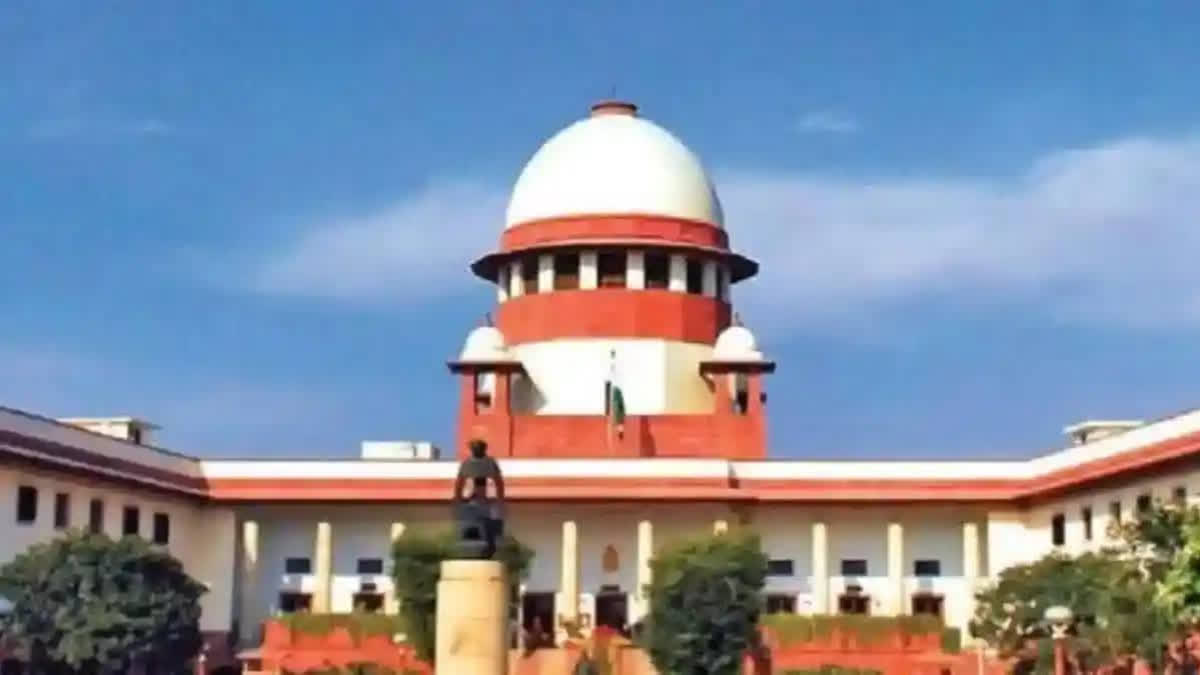New Delhi: The Supreme Court on Monday asked the Enforcement Directorate how it will draw the line between policy decision and criminality, and also if an increase in profit margin is enough to draw inferences on a decision taken by the Cabinet, of an elected government, and, if yes, then how will the Cabinet function?
The apex court was hearing bail pleas filed by former Delhi Deputy Chief Minister and AAP leader Manish Sisodia, in corruption and money-laundering cases linked to the alleged Delhi excise policy scam.
A bench comprising justices BR Gavai and KV Viswanathan queried the ED’s counsel, increasing the profit margin from 5 to 12 per cent - is that enough per se to draw inferences on a Cabinet decision? It has to be contrary to public interest or action contrary to public interest leading to disproportionate gains for others.
Additional solicitor general SV Raju, representing the ED, said the increase in profit is not the case of the central agency, many factual things happened prior to this increase: meetings took place…”.
“Something more than all this, otherwise the Cabinet cannot function…at this stage of bail, strictly res-judicata won’t apply to us. Where do you draw the line between policy and criminality?...how do you per se infer," queried Justice Viswanathan.
Raju said Sisodia is not an innocent person, and he and the other accused wanted to make money out of this exercise and the first step was to change the entire excise policy. He said they constituted an Expert Committee (the Dhawan Committee) to go into this issue as earlier distributors used to get a 5 per cent margin. But now, “Ravi Dhawan Committee says to remove them and appoint government company distributors and retain 5 per cent."
“They wanted to get over the Ravi Dhawan Committee report so they invited objections from the public, which was a façade. There is evidence to show Sisodia engineered emails to show that…”, said Raju, adding they made a case to not accept the Dhawan Committee’s report.
Raju said Sisodia was heading the Group of Ministers, who were in charges of this excise policy and he was also interacting with Vijay Nair, the media adviser of AAP, and Nair had nothing to do with excise policy and nothing to do with the government.
Raju said Nair was tasked to find out businessmen, who were willing to give kickbacks and for that, the accused could suitably tweak the excise policy. “We have digital evidence to that effect…Rs 100 crore bribe was demanded to be used for the Goa elections. Out of which we can track Rs 45 crore, where it has gone and who has paid…”, said Raju, adding that Sisodia was neck-deep in the excise policy scam.
Raju argued that profit margins cannot be increased arbitrarily without reason and added, “no tenders, but licence given to anyone who pays Rs 5 crore…”. Senior advocate AM Singhvi, representing Sisodia, queried, why should my liberty be restricted for 17 months is the larger question? “He is not a flight risk, cannot influence witnesses or tamper with evidence at this stage," said Singhvi. The hearing in the matter remained inconclusive and the court will continue to hear the matter next Monday.
Read more: ‘Have Become Death Chambers…’ SC Takes Suo Motu Cognisance of Death of 3 UPSC Aspirants in Delhi



